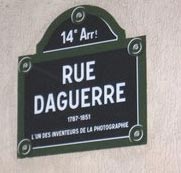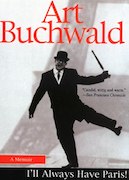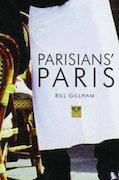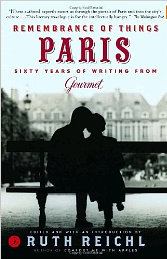Rue Daguerre

- SUBSCRIBE
- ALREADY SUBSCRIBED?
BECOME A BONJOUR PARIS MEMBER
Gain full access to our collection of over 5,000 articles and bring the City of Light into your life. Just 60 USD per year.
Find out why you should become a member here.
Sign in
Fill in your credentials below.
 Two stops on Métro line 4, Vavin to D’Enfert-Rochereau. Coming up for air, I can see the end or—depending on point of view—the beginning of the Boulevard Raspail and across the street the Catacombs, but I have other cats to whip, as the French put it. I’m heading for the Rue Daguerre, named for the man who invented photography and without whom we never would have had Mathew Brady’s magnificent photographs of the American Civil War.
Two stops on Métro line 4, Vavin to D’Enfert-Rochereau. Coming up for air, I can see the end or—depending on point of view—the beginning of the Boulevard Raspail and across the street the Catacombs, but I have other cats to whip, as the French put it. I’m heading for the Rue Daguerre, named for the man who invented photography and without whom we never would have had Mathew Brady’s magnificent photographs of the American Civil War.
But back to our muttons, as the French also put it. Actually veal and venison in the case at hand because I have come to Rue Daguerre for groceries. Company is coming for dinner—mainly American expats—and I thought my meatloaf, which can almost pass for a terrine if served cold and dinner is late enough, might hit the nostalgic spot, though I draw the line at mashed potatoes. Let them eat cornichons—and like it.
Rue Daguerre, at least its first two or three blocks, seems to shout Authentic Paris to tourists and expatriates. With the exception of a café and a hairdresser, all the businesses are selling food: a kind of spontaneous supermarket, you might think, without a common roof or cash registers. A Parisian, especially an older one, would say it is no such thing. It is a remnant of ancient logic—put all the food shops of a quartier on one street for convenience—and the logic still holds. It is not an ornament or an artifact to inspire snapshots, but sensible commerce. Napoléon was the pot calling the kettle black when he declared the English were a nation of shopkeepers.
My first stop is at the butcher’s. Veal they have, but venison is out of season (a phrase that has become almost unheard of in the States where everything is always in season somewhere and can be flown in at a price). So, as the French almost never say these days, lacking thrush, we’ll eat blackbirds, and I settle on rabbit.
The next stop, across the street, is the greengrocer for the makings of salad, then the cheese store, the wine shop, which will deliver, and the épicerie for a few odds and ends. The most enticing store to me at this point is an Asian grocery because I want a Chinese five-spice mixture that I have not seen anywhere. It is out of business or, as a man standing nearby says, with a lot less euphemism, “fini.” I expect him to draw his hand across his throat, but he does not.
The trip should have been over by now and I should be on my way home, but I really need the spice, so I stop in every little shop on the street—and finally find what I am looking for in a hole in the wall with a rack of spices at the back. The clerk does not abandon me after I make my need known, even though he has never heard of the mélange chinoise à cinque épices, but crouches shoulder to shoulder with me in front of the rack—the spices are not alphabetized—until we actually find it. He is as pleased as I am. The trip to Daguerre has been a triumph.
But on the way home, I grow a little sad. The food shops on the street are wonderful: the food is fresh and beautifully displayed, the service good and, most amazing, abundant. In Rue Daguerre, it is not necessary to get the butcher’s or the greengrocer’s attention. He… no, they are there, ready to serve: they get your eye. I have found everything I wanted, the prices were good, and dinner should be a hit. But I am sad.
I think I know why. I am going home as I came—on the subway. Time was, I’m sure, this would have made no sense. I would have strolled around the corner—as I do when I get home because I insist on buying my bread from the “artisan” baker—to do all this shopping. The logic of the “food street” in each quartier is being upset by upheavals in modern life. Not everyone is home during the day, but just as likely off working somewhere. The butcher or the cheese shop used to be always right around the corner, but “right around the corner” happens only at the very beginning of the working day, when no one wants to shop, or at the end, when it gets a little late to stock up for a dinner party.
Rue Daguerre may keep its sense and identity forever: I’d like that. But it will become a reminder of the way the city used to be as the hypermarchés in the suburbs and the food halls in the department store attract the people, one of whom (usually the wife or daughter of the household) typically spent the whole day in the neighborhood. C’est plus pratique. I can’t argue with that.
Rather than mourn in anticipation, I’ll keep returning to Rue Daguerre and enjoy its pleasures, even if it does become an artifact of temps perdu. As the French may still say from time to time, better a live dog than a dead lion.
© Joseph Lestrange
Subscribe for FREE weekly newsletters with subscriber-only content.
BonjourParis has been a leading France travel and French lifestyle site since 1995.
Readers’ Favorites: Top 100 Books, imports & more at our Amazon store
We daily update our selections, including the newest available with an Amazon.com pre-release discount of 30% or more. Find them by starting here at the back of the Travel section, then work backwards page by page in sections that interest you.
Apparently “Paris love” is not uncommon…click on an image for details about these wonderful Paris memoirs and essays.
Click on this banner to link to Amazon.com & your purchases support our site….merci!






